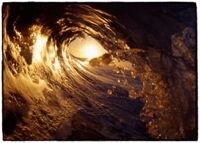Exposure
From Nordan Symposia
Jump to navigationJump to searchThe printable version is no longer supported and may have rendering errors. Please update your browser bookmarks and please use the default browser print function instead.
- Date: 1605]
Definitions
- 1 : the fact or condition of being exposed: as a : the condition of being presented to view or made known <a politician seeks a lot of exposure>
- b : the condition of being unprotected especially from severe weather <died of exposure>
- c : the condition of being subject to some effect or influence <risk exposure to the flu>
- d : the condition of being at risk of financial loss <minimizes your exposure to market fluctuations>; also : an amount at risk
- 2 : the act or an instance of exposing: as a : disclosure of something secret <tried to prevent exposure of their past>
- b : the treating of sensitized material (as film) to controlled amounts of radiant energy; also : the amount of such energy or length of such treatment <a 3-second exposure>
- 3 a : the manner of being exposed
- b : the position (as of a house) with respect to weather influences or compass points <a room with a southern exposure>
- 4 : a piece or section of sensitized material (as film) on which an exposure is or can be made <36 exposures per roll>
Description
In photography, exposure is the total amount of light allowed to fall on the photographic medium (photographic film or image sensor) during the process of taking a photograph. Exposure is measured in lux seconds, and can be computed from exposure value (EV) and scene luminance over a specified area.
In photographic jargon, an exposure generally refers to a single shutter cycle. For example: a long exposure refers to a single, protracted shutter cycle to capture enough low-intensity light, whereas a multiple exposure involves a series of relatively brief shutter cycles; effectively layering a series of photographs in one image. For the same film speed, the accumulated photometric exposure (H) should be similar in both cases.[1]
